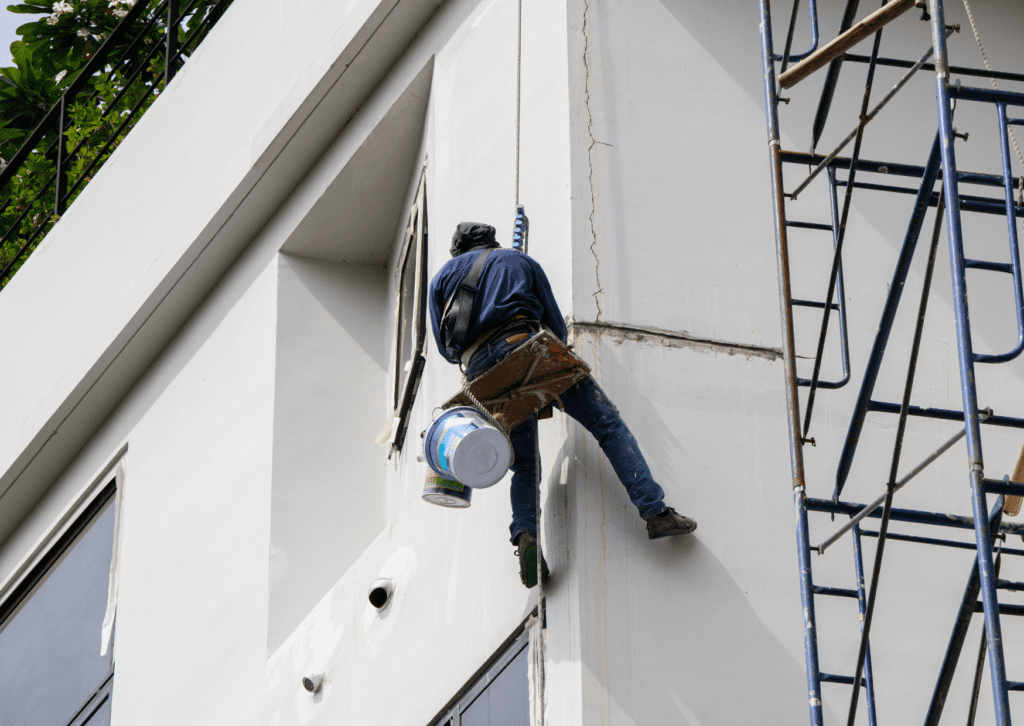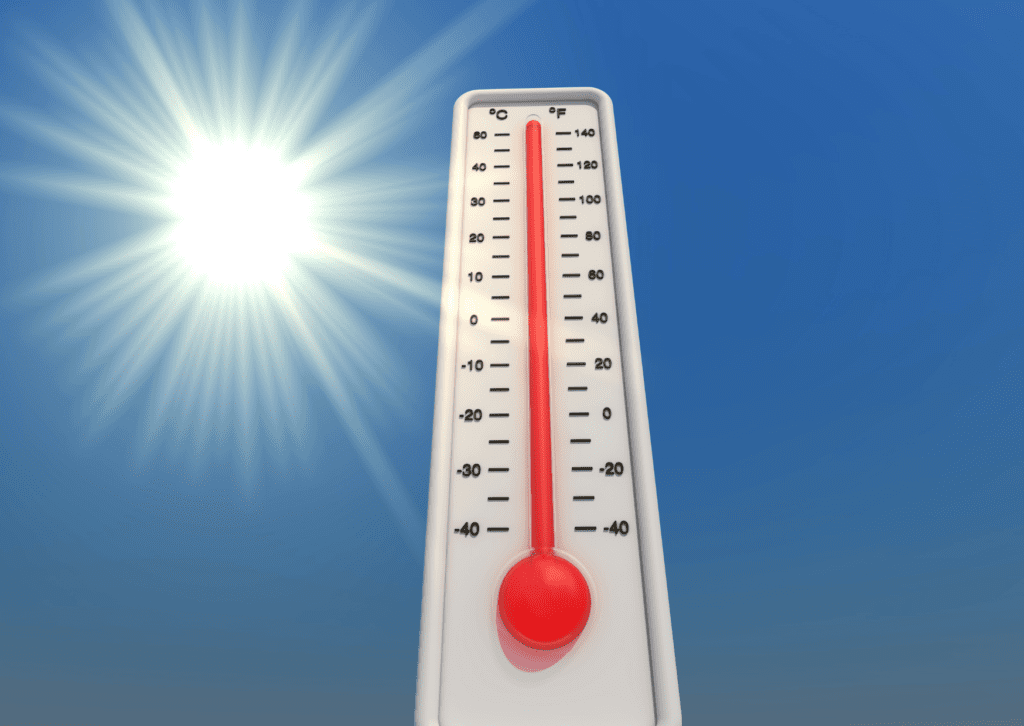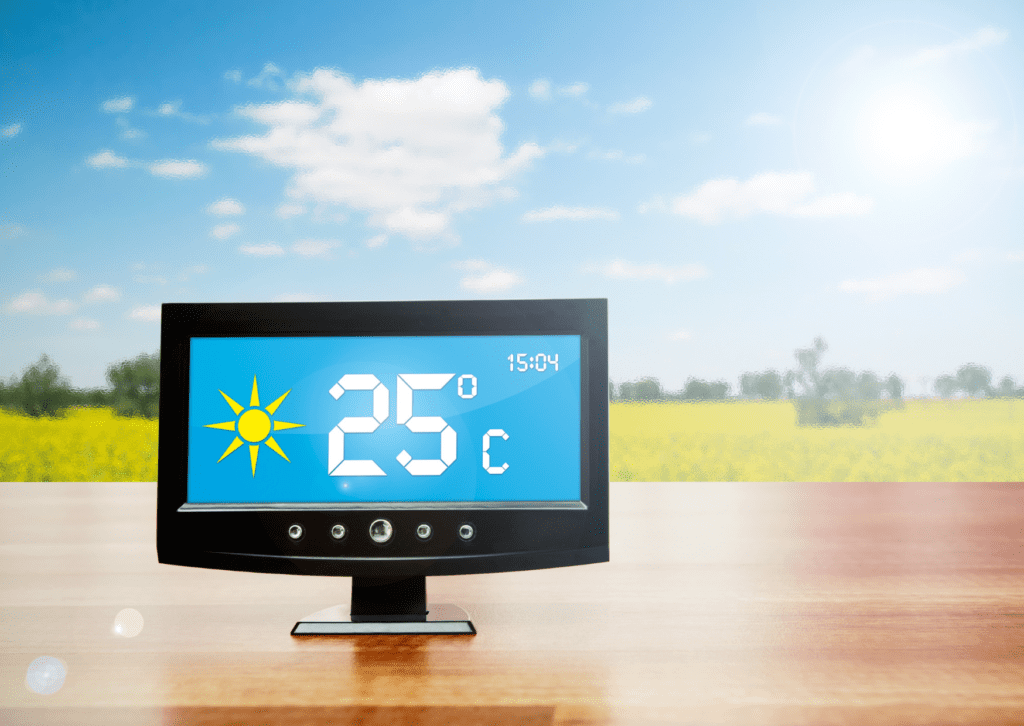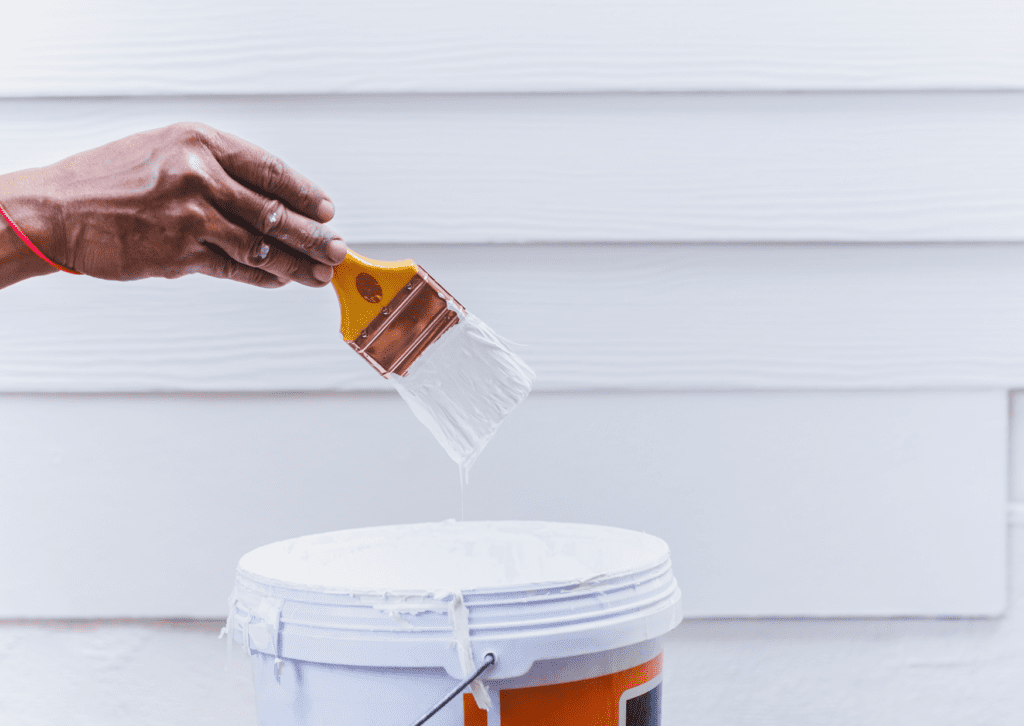
For nearly 20 years, M&E Painting & Roofing has been more than just a business—we’ve been a part of the Northern Colorado community. We’ve painted over 10,000 homes, and we know that when it comes to painting your home, whether indoors or out, it is crucial to understand the role of temperature. We often focus on the type of paint or the color scheme, but the paint and temperature relationship is just as crucial in determining the quality of the final result. At M&E Painting, we’ve seen firsthand how the wrong conditions can turn a seemingly simple interior painting project into a frustrating experience. In this article, we’ll explore why temperature matters and how it can impact everything from interior walls to your home’s exterior.
How Temperature Impacts Your Home’s Paint Job

When painting your home, the weather isn’t just a minor detail—it’s a significant factor in achieving that flawless finish. Whether working indoors or tackling your home’s exterior, understanding how temperature affects paint application is crucial. At M&E Painting, we’ve seen firsthand how ignoring this can make a simple project a headache. So, let’s break it down—why does temperature matter, and how can you ensure your home looks great no matter the weather?
Ideal Temperature Ranges for Different Paints
Different paints thrive in different conditions. Latex paint needs a sweet spot between 50°F and 85°F, while oil-based paints need it a bit warmer—45°F to 90°F. Before you grab that brush, check both the air and surface temperatures to make sure you’re in the clear. We at M&E Painting recommend using an infrared thermometer to double-check those surface temperatures.
How Cold Weather Can Mess with Your Paint Job
Painting in the cold? Think again. Low temperatures can wreak havoc on your paint job, especially exterior projects. Latex paint struggles to adhere, and even oil-based paint can slow down, leading to a finish that’s less than ideal. Cold weather can cause moisture to build up on surfaces, making it even harder for paint to stick.
Weather and Paint Durability

The weather isn’t just about getting the paint on the wall—it’s about ensuring it stays there. Direct sunlight can dry the paint too quickly, causing cracks and blisters. On the flip side, too much humidity can make your paint sticky and hard to work with. M&E Painting advises choosing a day with mild temperatures and low humidity to get the best results.
The Battle with Humidity
Humidity is another factor that can throw a wrench in your painting plans. High humidity slows down drying times, leading to streaky, uneven finishes. When working indoors, control your environment with an air conditioner or dehumidifier to keep things on track.
The Challenges of Exterior Painting in the Cold

Exterior painting in colder temperatures requires special consideration. The surface temperature of your home’s exterior can be much cooler than the air around it, particularly in shaded areas. Lower temperatures can slow the drying process, making it difficult for the paint to cure properly. Painting in these conditions can lead to a paint job that doesn’t adhere well, resulting in peeling or cracking. To ensure the paint dries properly, it’s essential to start painting when both the air and surface temperatures are within the ideal temperature range.
M&E Painting recommends scheduling your exterior painting projects during a sunny day when the temperatures drop are less likely. This helps avoid issues with dew point, which can cause the paint to remain wet for too long and lead to problems.
Tips for Painting in Varying Temperatures

Achieving a smooth, durable finish requires careful planning and attention to detail. First, choose innovative paints that perform well in a wide temperature range. These more innovative paints can withstand extreme temperatures without compromising the quality of the painting project. Additionally, using tools like an infrared thermometer to monitor surface temperatures can help ensure you work in optimal conditions.
Why Latex Paint Shines in Extreme Weather
Latex-based paints are often preferred for exterior painting in fluctuating weather because they are more flexible and can expand and contract with changing temperatures ranging from as low as 35°F to higher extremes. This flexibility makes them less likely to crack or peel when the weather changes, making them a smart choice for long-lasting results.
What Precautions Should Be Taken for Interior Painting Projects?

When working on interior painting projects, it’s crucial to consider the environment inside the home. Cold weather can make it challenging to keep the house warm enough for the paint to cure correctly, while too much humidity can introduce moisture, leading to an uneven finish.
To mitigate these risks, ensure the room is adequately ventilated, and consider using an air conditioner or heater to maintain a stable temperature range. Also, avoid starting a project if colder temperatures are forecasted, which can extend drying times and compromise the paint job.
Ready to Transform Your Home? Contact Us Today!

If you’re planning a painting project and want to ensure the best results, don’t hesitate to contact professionals. Whether you’re dealing with cold temperatures or extreme heat, our experienced team at M&E Painting knows how to navigate the challenges of paint and temperature to deliver a flawless finish. Contact us today to discuss your next project!
Understanding the relationship between paint and temperature is key to achieving a long-lasting, high-quality finish. By considering the temperature range, choosing the right paint formula, and working with professionals who know the ins and outs of painting projects, you can ensure your home looks its best in any weather.
Frequently Asked Questions: How Do Paint and Temperature Impact the Quality of Your Home’s Finish?
Q: Why is temperature important when painting?
A: Temperature affects how well paint adheres to surfaces and how it dries. It can impact the finish quality for interior and exterior painting projects.
Q: What is the ideal temperature range for latex paint?
A: Latex paint generally works best in temperatures ranging from 50°F to 85°F.
Q: How does cold weather affect paint application?
A: Cold weather can cause paint to struggle with adhesion, potentially leading to peeling. It can also slow down drying times and result in a poor finish.
Q: What role does humidity play in painting?
A: High humidity can slow the drying process and trap moisture in the paint, leading to an uneven or streaky finish.
Q: How can I ensure good paint application in varying temperatures?
A: Choose innovative paints designed for a wide temperature range and monitor surface temperatures using tools like an infrared thermometer.
Q: What are the benefits of using latex-based paints in extreme temperatures?
A: Latex-based paints are more flexible and can expand and contract with changing temperatures, making them less likely to crack or peel.
Q: What precautions should be taken for interior painting projects?
A: Ensure proper ventilation, maintain a stable temperature range using air conditioning or heating, and avoid starting projects when colder temperatures are forecasted.
Q: How does direct sunlight affect exterior painting?
A: Direct sunlight can cause paint to dry too quickly, cracking and blistering.
Q: What is the recommended temperature range for oil-based paints?
A: Oil-based paints generally require temperatures ranging from 45°F to 90°F.
Q: Why is it important to check air and surface temperatures before painting?
A: Surface temperatures can differ from air temperatures, especially in shaded areas. Both must be within the ideal range for proper paint adhesion and drying.
